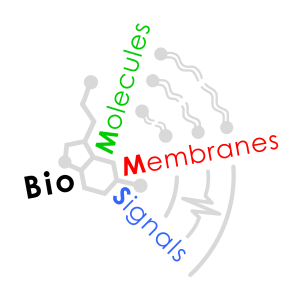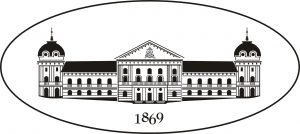Head of Department
Assoc. Prof. Simeon Ribagin, PhD
- Email: simribagin@gmail.com
- Phone: 02 979 3613
- Address: “Acad. G. Bonchev” Str., Block 105, Room 209
Sofia 1113, Bulgaria
Staff
- Prof. Rositsa Raikova, DSc., rosi.raikova@biomed.bas.bg
- Senior Assist. Prof. Aleksandar Dimitrov, PhD, agd@biomed.bas.bg
- Senior Assist. Prof. Vladimir Dimitrov, PhD, vgdi@abv.bg
- Senior Assist. Prof. Kapka Mancheva, PhD, kapka_mancheva@abv.bg
- Senior Assist. Prof. Silviya Angelova, PhD, sis21@abv.bg
- Emil Petrov, PhD, technical assistant, epetroff@abv.bg
- Ivan Boiadzhiev, technical assistant, iv.boiadzhiev@gmail.com
Main research topics
The Department “Motor Control” was established in 2019 as a union of the former Department “Biomechanics and Motor Control”, head: Prof. Rossitsa Raikova, and Department “Excitable Structures”, head: Corr. Mem. Prof. Andon Kossev.
Currently, the Department is mainly focused on research in the following scientific topics:
- Investigation of biomechanics and motor control of the human limbs, modeling and simulation of the motor activity at the muscle and motor units level. Investigation of the force developed by muscle motor units as a result of different stimulations. Experimental methods for estimation of muscle activity in norm and pathology – leader of the topic Prof. R.Raikova
- Application of mathematical modeling of bioelectrical processes in complex biophysical systems (nerves and skeletal muscles in norm and pathology) for improving the diagnostics and methods of treatment of neurological and neuromuscular disorders, including: 1) Modeling of intracellular potentials produced by skeletal muscle fibers as well as of extracellular potentials generated by muscles in order to adequately interpret the recorded electromyographic signals. 2) Modeling of electro-diffusion processes in myelinated axons including: a) Creation of computer-aided multi-cable research models of myelinated axon. b) Creation of adequate models of pump and transporter current by modeling stationary currents of cyclic chemical processes. c) Discovery of the mechanisms of phenomena observed experimentally in norm and pathology in the myelinated axon, by modeling them. – leader of the topic Assoc. Prof. A. Dimitrov
- Development of an orthesis device prototype for elbow joint aiming rehabilitation. It will be driven by an electrical motor and the control will be automatic with given velocities of the elbow flexion/extension or processed electromyographic signals from surface muscles will be used as control signals. Management based on own EMG signals could help to implement active rehabilitation of people with movement disorders coming from elbow joint as a result of injuries with different origin. – leader of the project Senior Assist. Prof S. Angelova
Experimental methods
- Recording and processing of electromyographic signals from surface placed muscles of human upper limbs and of the joint angles during different motor tasks in healthy individuals and participants with specific motor symptoms – leader: Senior Assist. Prof S. Angelova
- Studying of cortical and corticospinal activity in norm and pathology by the method of transcranial magnetic stimulation in combination with electromyography – leader: Senior Assist. Prof. K. Mancheva, PhD
Research projects
Current projects
-
- № КП-06-Н57/18
Bulgarian National Science Fund, 16.11.2021,
Leader: Assoc. Prof. Ivan Ivanov, Institute of Mechanics – BAS, National Sports Academy “Vassil Levski”
“Muscles of the lower limb / Anatomical positions and functions” - “Theoretical investigation and experimental verification of the activity of the human upper limb without and with using of an active elbow mio-orthesis”.
Bulgarian National Science Fund. Competition for financial support for projects of junior basic researchers and postdocs – 2020,
Leader: Assoc. Prof S. Angelova
Presentation (in Bulgarian, 1358 Kb, pptx)
- № КП-06-Н57/18
Video 1 (Download: MAH00030.mp4 (33.6 Mb)
Video 2 (Download: MAH00031.mp4 (52.4 Mb)
Video 3 (Download: MAH00032.mp4 (86.0 Mb)
Video 4 (Download: MAH00033.mp4 (45.5 Mb)
Video 5 (Download: MAH00034.mp4 (56.3 Mb)
- “The model of skeletal muscle and simulation of muscle activity”.
EBR-BAS-PAS, 2018-2021,
Coordinator: Prof. R.Raikova
Past projects Selected publications (2008-2021)
International collaboration
Awards
1. Angelova S., Raikova R., Chakarov V., Aladjov H. (2013) Estimation of the upper arm motor deficit in stroke patients using EMG signals – A preliminary study. Series on Biomechanics, 28 (1-2), 20-27.
2. Angelova S., Ribagin S., Raikova, Veneva I. (2017) Power Frequency Spectrum Analysis of Surface EMG Signals of Upper Limb Muscles During Elbow Flexion – A Comparison Between Healthy Subjects And Stroke Survivors. Journal of Electromyography and Kinesiology), 38,7-16.
3. Arabadzhiev T.I., Dimitrov G.V., Chakarov V.E., Dimitrov A.G., Dimitrova N. A. (2008) Effects of changes in intracellular action potential on potentials recorded by single-fiber, Macro, and belly-tendon electrodes. Muscle & Nerve 37, 700-712.
4. Arabadzhiev T.I., Dimitrov V.G., Dimitrova N.A., Dimitrov G.V. (2010) Interpretation of integral or RMS EMG and estimate of “neuromuscular efficiency” in fatiguing contraction can be misleading, J. Electromyogr. Kinesiol., 20: 223-232.
5. Celichowski J., Raikova R., Drzymala-Celichowska H., Ciechanowicz I., Krutki P., Rusev R. (2008) Model-generated decomposition of motor unit unfused tetani evoked at random stimulation pattern. Journal of Biomechanics, 3448-3454.
6. Celichowski J., Raikova R., Aladjov H., Krutki P. (2014) Dynamic changes of twitch-like responses to successive stimuli studied by decomposition of motor unit tetanic contractions in rat medial gastrocnemius. Journal of Neurophysiology, 112, 3116-3124.
7. Celichowska-Drzymala H., Raikova, Krutki P. (2016) Prolonged activity evokes potentiation and the “sag” phenomenon in slow motor units of rat soleus. Acta Neurobiol. Exp., 76, 152-157.
8. Christov, Raikova R., Angelova S. (2018) Separation of electrocardiographic from electromyographic signals using dynamic filtration. Medical Engineering and Physics, 57, 1-10.
9. Christov I., Gotchev A., Bortolan G., Neycheva T., Raikova R., Schmid R.(2020) Separation of the electromyographic from the electrocardiographic signals and vice versa. A topical review of the Dynamic procedure. International Journal Bioautomation, Institute of Biophysics and Biomedical Engineering at the Bulgarian Academy of Sciences, 24(3) 289-317. 2020, ISSN:1314-2321, 1-23.
10. Dimitrov A.G. (2017) An approach to expand description of the pump and co-transporter steady-state current. Journal of Theoretical Biology, 412, 94-99.
11. Dimitrov A.G., Dimitrova N.A. (2014) Internodal mechanism of pathological afterdischarges in myelinated axons. Muscle and Nerve, 49 (1), 47-55.
12. Dimitrov A.G., Dimitrova N.A. (2013) Axonal Afterdischarges: Problems and Mechanisms. In: Axons: Cell Biology, Molecular Dynamics and Roles in Neural Repair and Rehabilitation., 178-240 Nova Science Publishers Inc., ISBN:9781629480510
13. Dimitrov A.G., Dimitrova N.A. (2012) A possible link of oxaliplatin-induced neuropathy with potassium channel deficit. Muscle and Nerve, 45(3), 403-411.
14. Dimitrov A.G. (2009) A possible mechanism of repetitive firing of myelinated axon. Pflugers Arch – Eur J Physiol, 458(3), 547-561.
15. Dimitrov V. G., Arabadzhiev T. I., Dimitrova N. A., Dimitrov G. V. (2009) Eccentric contraction-induced muscle fiber adaptation. Bioautomation, 13, 4, 119-126.
16. Dimitrov V.G., Arabadzhiev T.I., Dimitrova N.A., Dimitrov G.V. (2012) The spectral changes in EMG during a second bout eccentric contraction could be due to adaptation in muscle fibres themselves: a simulation study. European Journal of Applied Physiology, 112, 4, 1399-1409.
17. Drzymała-Celichowska H., Raikova R., Krutki P. (2015) Decomposition of motor unit tetanic contractions of rat soleus muscle: Differences between males and females. Journal of Biomechanics, Accepted: July 18, 2015; Published Online: July 28, 2015.
18. Krysciak K., Celichowski J., Krutki P., Raikova R., Drzymala-Celichowska H. (2019) Factors contributing to sag in infused tetanic contractions of fast motor units in rat medial gastrocnemius. Journal of Electromyography and Kinesiology, 44:70-77. doi: 10.1016/j.jelekin.2018.11.011.
19. Krutki P., Pogrzebna M., Drzymala H., Raikova R., Celichowski J. (2008) Force generated by fast motor units of the rat medial gastrocnemius muscle during stimulation with pulses at variable intervals. Journal of Physiology and Pharmacology, 59, 85-100.
20. Krutki P., Celichowski J., Raikova R (2012) Motor unit contractions evoked by stimulation with variable interpulse intervals. Biocybernetics and Biomedical Engineering, 32 (3), 29-42.
21. Krutki P., Mrówczyński W., Raikova R., Celichowski J. (2014) Concomitant changes in afterhyperpolarization and twitch following repetitive stimulation of fast motoneurones and motor units. Experimental Brain Research, 232 (2), 443-452.
22. Mancheva K., Karaivanova E., Atanasov G., Stojanovski S., Nedeva I. (2009) Analysis of the influence of the host body size on morphometrical characteristics of Ancylodiscoides siluri and Ancylodiscoides vistulensis. Biotechnology & Biotechnological Equipment, 23(2), 735-741.
23. Mancheva K., Christova L., Kossev A. (2013) Effects of muscle activation mode on reaction time. Comptes rendus de l’Académie bulgare des Sciences 66 (11), 1633-1638.
24. Mancheva K., Schrader C., Christova L., Dengler R., Kossev A.R. (2014) The effect of muscle vibration on short latency intracortical inhibition in humans. European Journal of Applied Physiology 114 (10), 2073-2080.
25. Mancheva K., Rollnik J.D., Wolf W., Dengler R., Kossev A. (2017) Vibration-Induced Kinesthetic Illusions and Corticospinal Excitability Changes. Journal of Motor Behavior 49(3), 299-305.
26. Mancheva K., Stephanova D.I., Wolf W., Kossev A. (2017) Long-lasting intracortical inhibition during unilateral muscle activity. Badnjevic (ed.) in CMBEBIN, IFMBE proceedings, 62, 333-338.
27. Mancheva, K., Stephanova, D.I., Wolf, W., Kossev, A. (2018) The effect of co-activation of antagonist muscles on motor cortex excitability: a transcranial magnetic stimulation study. International Journal Bioautomation 22 (2): 187-194.
28. Mancheva, K., Vukova, T., Atanasov, G., Kossev, A. (2020) Recruitment curves during different types of muscle activity in non-dominant hand: a transcranial magnetic stimulation study. International Journal Bioautomation 24(4): 393-402
29. Mancheva, K., Kossev, A. Hemisphere asymmetry during different levels of co-activation of antagonist muscles: a transcranial magnetic stimulation study. Comptes rendus de l’Académie bulgare des Sciences, in press (accepted 2020)
30. Mrówczyński W., Celichowski J., Raikova R., Krutki P. (2015) Physiological consequences of doublet discharges on motoneuronal firing and motor unit force. Frontiers in Cellular Neuroscience, 9, Art.No 81, 1-6.
31. Raikova R., Pogrzebna M., Drzymała H., Celichowski J., Aladjov H. (2008) Variability of successive contractions subtracted from unfused tetanus of fast and slow motor units. Journal of Electromyography and Kinesiology, 18, 741-751.
32. Raikova R. (2009) Investigation of the influence of the elbow joint reaction on the predicted muscle forces using different optimization functions. Journal of Musculoskeletal Research, 12, 1-13.
33. Raikova (2010) Some considerations about the prediction of muscle forces for multi-joints biomechanical models. Series on Biomechanics, 25 (3-4), 23-32.
34. Raikova R., Rusev R., Drzymała-Celichowska H., Krutki P., Aladjov H., Celichowski J. (2010) Experimentally verified mathematical approach for prediction of force developed by motor units at variable frequency stimulation patterns. Journal of Biomechanics, 43, 1546-1552.
35. Raikova R.T. (2012) Indeterminate problems in biomechanics – models of muscles and their control (summary paper). Series on Biomechanics, 26 (1-2), 5-16.
36. Raikova R., Aladjov H., Celichowski J., Krutki P. (2013) An approach for simulation of the muscle force modeling it by summation of motor unit contraction forces. Computational and Mathematical Methods in Medicine, Art. No. 625427.
37. Raikova R., Angelova S., Chakarov C., Krastev D. (2014) An approach for experimental investigation of muscle activities of the upper limbs (right versus left arm) of healthy subjects and post-stroke patients – a preliminary study. International Journal Bioautomation, 18(2) 101-110.
38. Raikova R., Angelova S., Ribagin S. (2016) Changes in EMG activities of upper arm muscles and in shoulder joint angles in post-stroke patients. International Journal Bioautomation, 2016, 20(3), 389-406.
39. Raikova, Aladjov H., Krutki P., Celichowski J. (2016) Estimation of the error between experimental tetanic force curves of MUs of rat medial gastrocnemius muscle and their models by summation of equal successive contractions. Computer Methods in Biomechanics and Biomedical Engineering, 19(7),763-770.
40. Raikova R., Celichowski J., Krutki P. (2016) A general mathematical algorithm for predicting the course of unfused tetanic contractions of motor units in rat muscle. Plos One. 11(9):e0162385
41. Raikova R., Celichowski J., Angelova S., Krutki P. (2018) A model of the rat medial gastrocnemius muscle based on inputs to motoneurons and on an algorithm for prediction of the motor unit force. Journal of Neurophysiology, 120(4):1973-1987, https://doi.org/10.1152/jn.00041.2018
42. Krysciak K., Celichowski J., Krutki P., Raikova R., Drzymala-Celichowska H. (2019) Factors contributing to sag in infused tetanic contractions of fast motor units in rat medial gastrocnemius. Journal of Electromyography and Kinesiology. 2019 Feb;44:70-77. doi: 10.1016/j.jelekin.2018.11.011
43. Rakoczy J., Kryściak K., Drzymała-Celichowska H., Raikova R., Celichowski J. (2020) Biomechanical conditioning of the motor unit transitory force decrease following a reduction in stimulation rate. BMC Sports Sci Med Rehabil 12, 60 (2020). https://doi.org/10.1186/s13102-020-00208-6
44. Raikova R., Krasteva V., Krutki P., Drzymała-Celichowska H., Kryściak K., Celichowski J. (2021). Effect of synchronization of firings of different motor unit types on the force variability in a model of the rat medial gastrocnemius muscle. Plos Computational Biology , Published: April 26, 2021. https://doi.org/10.1371/journal.pcbi.1008282
45. Rusev R., Raikova , Celichowski J. (2009) Prediction of tetanic force of muscle motor units evoked by irregular stimulation patterns. International Journal Bioautomation, 13 (4), 101-110.







